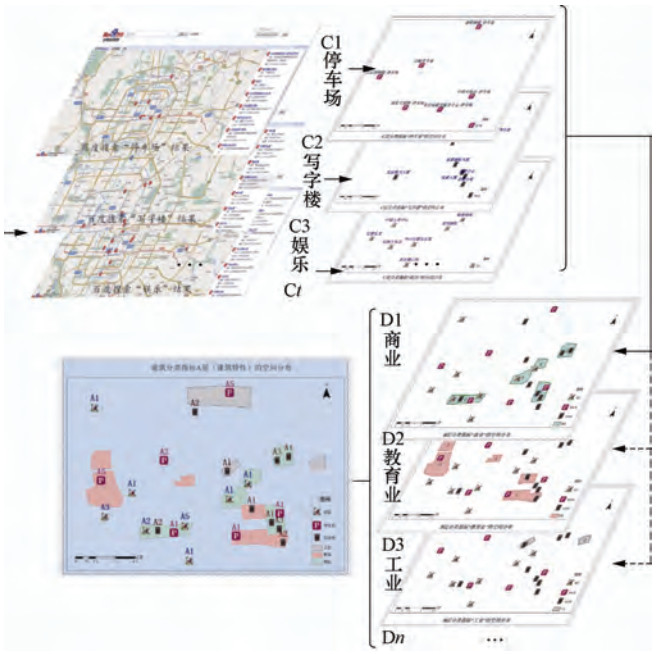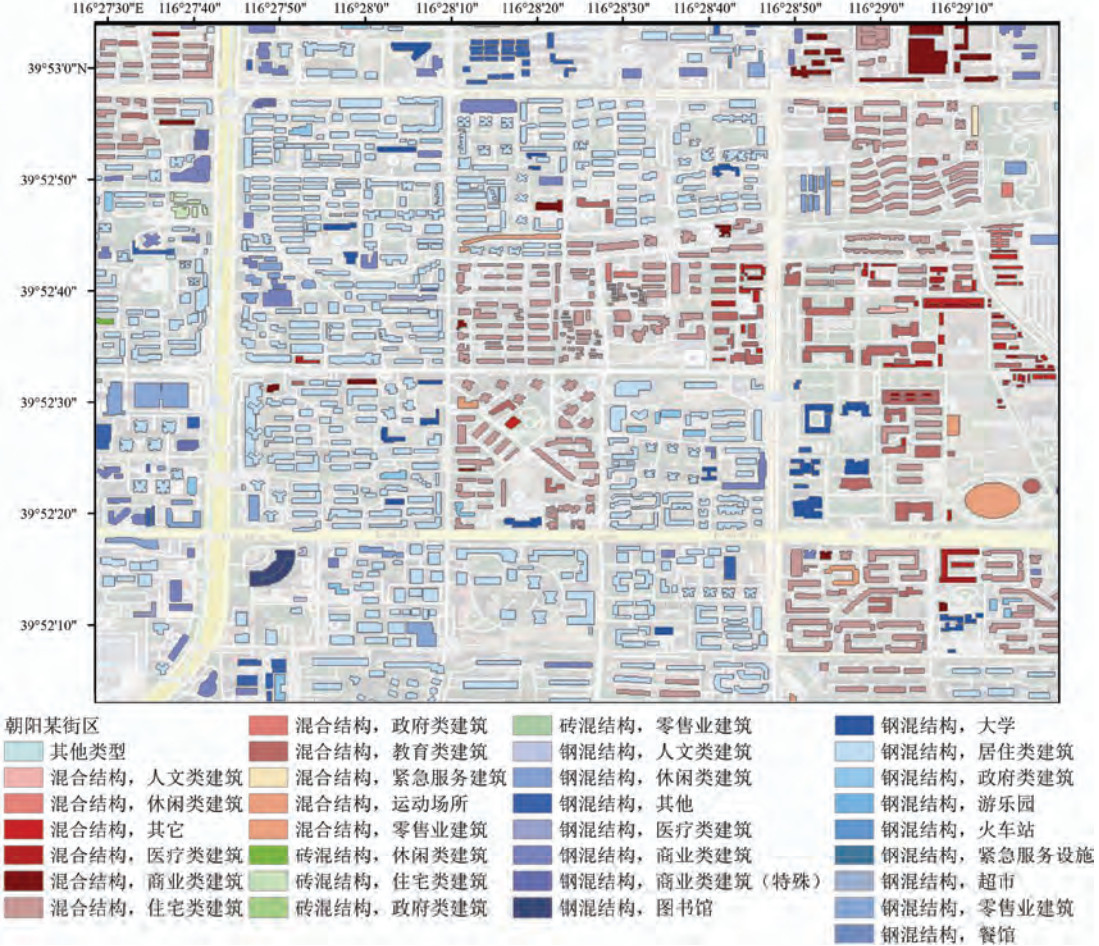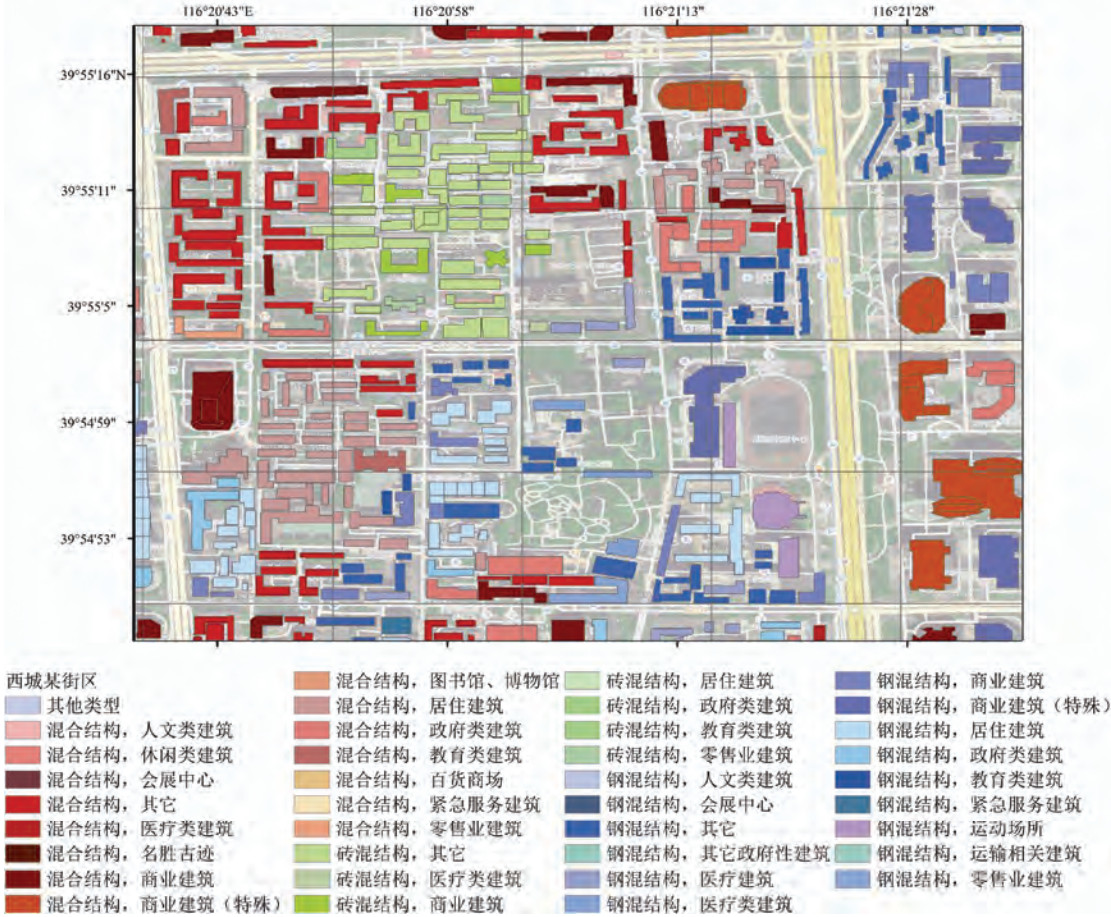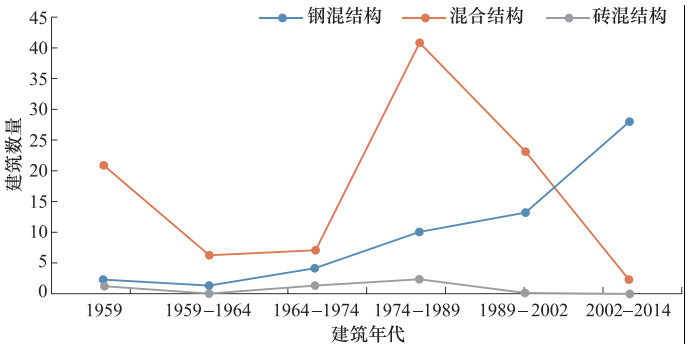Structure Type and Function of Building-Based Building Classification and Its Application
-
摘要: 基于结构类型的建筑分类是抗震设计和地震灾害分布调查的基础,也是开展建筑结构地震易损性研究所依据的分类形式,而在社会管理中则更注重基于使用功能的建筑分类。上述2种建筑分类方法难以给出恰当的经济损失评估结果,因此在面向地震巨灾保险研究与应用时存在一些不足。首先,传统的建筑分类将建筑的使用功能与结构类型平行处理,未考虑建筑结构类型和建筑使用功能的耦合影响;其次,随着经济社会的发展,建筑结构形式和使用功能均不断地变化,需要发展适用性强大的非固定类型分类方法。本文针对地震巨灾保险业务中建筑分类这一核心问题,结合中国建筑形式和使用功能,从建筑结构分类出发,进一步考虑建筑的使用功能,形成了基于结构类型-使用功能多因素耦合的建筑分类模型,并以北京市典型区域为例,对所提出的建筑分类模型开展应用示范。同时,本文提出的建筑分类模型结合网络信息技术,可解决传统分类应用于具体目标区域时分类指标体系不具备可变性的问题,满足了地震巨灾保险的数据需求。Abstract: The structure type based on building classification is the fundamental of seismic design and earthquake disaster investigation, and is also the classification form of research basis of seismic vulnerability of building structures. In social management, however, more attention is paid to the function based building classification. In general, both these two kinds of building classification methods have some shortcomings in the research and application of earthquake catastrophe insurance, because it is difficult to give the appropriate economic loss evaluation results based on these two traditional building classification methods. First of all, in traditional building classification methods we take the building function in parallel with the building structure type, without considering the coupling effect between the building structure type and the building function. Secondly, with the development of economy and society, the building structure types and functions change constantly. It is necessary to develop a building classification method with non-fixed classes and strong applicability. To solve this core problem of building classification method in earthquake catastrophe insurance, considering the features of Chinese architectural forms and use purpose, a multi-factor coupled building classification model based on building structure type and function was developed in consideration of building classification based on both the structure type and the building function. Taking the typical area of Beijing as an example, we conducted the demonstration by applying the proposed structure type-function based on building classification method. Finally, in order to meet the data demand of earthquake catastrophe insurance, we propose that the combination of network information technology to solve the problem that the classification index system does not have the variability when the traditional classification is applied to the specific target area.
-
Key words:
- Earthquake /
- Catastrophe insurance /
- Building classification /
- Information extraction
-
表 1 常用建筑的结构类型、地域分布及其用途
Table 1. Empirical distribution and function of buildings with different structure types
结构类型 建筑分布 建筑用途 木结构 古建筑保护区、南方乡村等 居住、礼制、陵墓等 砖石结构 古建筑保护区、中部、西北地区乡村等 居住、礼制、陵墓 砌体结构配筋砌体 全国 居住、办公、工业等 砌体结构无筋砌体 全国,村镇自建房居多 居住、工业、围墙等 框架结构 全国 居住、办公、商业、工业 剪力墙结构 全国 居住、办公 框支剪力墙结构 全国 底层商业的综合体 框架-剪力墙结构 全国 办公、商业、娱乐、酒店、工业等 筒体-框架结构 全国 办公、商业 壳体结构 全国 商业、交通、工业 网架结构 全国 商业、交通、工业 表 2 百度API获取的建筑物POI分类
Table 2. Building POI classification from Baidu API
POI大类 POI小类 政府机构
及社会团体社会团体、交通车辆管理、公检法机构等 科教文化服务 科研机构、学校等 交通设施服务 停车场、火车站、长途汽车站、港口码头、地铁站、公交车站等 金融保险服务 保险公司、银行、金融保险服务机构、自动提款机等 公司企业 农林牧渔基地、公司、公司企业等 住宿服务 住宿服务相关、旅馆招待所、宾馆酒店等 体育休闲服务 休闲场所、影剧院、娱乐场所、运动场馆等 道路附属设施 收费站、服务区、路牌信息、警示信息等 公共设施 紧急避难场所、公共厕所 通行设施 临街院门、通行设施 商务住宅 住宅区、楼宇、商业住宅相关、产业园区等 风景名胜 风景名胜、公园广场等 医疗保健服务 专科医院、综合医院、医疗保健服务场所、疾病预防机构、诊所等 生活服务 洗衣店、物流速递、中介机构、电讯营业厅、邮局等 购物服务 家电电子卖场、商场、便利店、超级市场等 餐饮服务 休闲餐饮场所、咖啡厅、快餐店、中餐厅等 汽车销售 汽车销售等 汽车维修 汽车维修、汽车养护、加油站等 摩托车服务 摩托车销售 表 3 按结构-使用功能分类的北京市建筑分布比例(单位:%)
Table 3. Proportions of buildings with coupling classification in Beijing (unit:%)
POI大类 钢混结构
比例混合结构
比例砖混结构
比例商务住宅 92.58 93.32 85.28 政府机构及
社会团体0.29 0.17 0.66 公司企业 0.31 0.13 0.66 风景名胜 0.15 0.09 0.51 购物服务 1.54 0.26 2.15 科教文化服务 0.43 0.95 1.58 住宿服务 0.60 0.26 0.76 餐饮服务 0.44 0.43 1.49 交通设施服务 1.47 2.72 2.72 通行设施 1.00 0.91 1.65 生活服务 0.78 0.43 1.52 体育休闲服务 0.15 0.17 0.22 医疗保健服务 0.19 0.17 0.60 金融保险服务 0.05 0 0.06 汽车服务 0.02 0 0.06 汽车维修 0 0 0 公共设施 0.01 0 0.06 摩托车服务 0 0 0 汽车销售 0 0 0 -
陈洪富, 2012.HAZ-China地震灾害损失评估系统设计及初步实现.哈尔滨: 中国地震局工程力学研究所. 国家地震局, 国家统计局, 1996.(1990-1995)中国大陆地震灾害损失评估汇编.北京:地震出版社. 吕红山, 2005.基于地震动参数的灾害风险分析.北京: 中国地震局地球物理研究所. 美国应用技术委员会, 1991.加利福尼亚未来地震的损失估计.曹新玲, 译.北京: 地震出版社. 邬亲敏, 2004.建筑物地震保险评估方法与信息管理系统研究.青岛: 中国海洋大学. http://cdmd.cnki.com.cn/Article/CDMD-10423-2004131886.htm 徐敬海, 刘伟庆, 邓民宪, 2002.建筑物震害预测模糊震害指数法.地震工程与工程振动, 22(6):84-88. doi: 10.3969/j.issn.1000-1301.2002.06.014 徐偲, 周坚华, 2014.多描述符和多尺度城镇建筑分类.遥感信息, 29(2):17-22, 55. doi: 10.3969/j.issn.1000-3177.2014.02.003 尹之潜, 1996.地震灾害及损失预测方法.北京:地震出版社. 中国地震局监测预报司, 2001.(1996-2000)中国大陆地震灾害损失评估汇编.北京:地震出版社. 中国地震局震灾应急救援司, 2006.2001-2005年中国大陆地震灾害损失评估汇编.北京:地震出版社. 中国地震局震灾应急救援司, 2011.2006-2010年中国大陆地震灾害损失评估汇编.北京:地震出版社. 中华人民共和国国家质量监督检验检疫总局, 中国国家标准化管理委员会, 2015.GB/T 19428-2014地震灾害预测及其信息管理系统技术规范.北京:中国标准出版社. 中华人民共和国建设部, 国家质量监督检验检疫总局, 2004.GB 50011-2001建筑抗震设计规范.北京:中国建筑工业出版社. 中华人民共和国住房和城乡建设部, 中华人民共和国国家质量监督检验检疫总局, 2010.GB 50011-2010建筑抗震设计规范.北京:中国建筑工业出版社. FEMA, 2018. Hazus technical and user's manuals. (2019-05-07). https://www.fema.gov/media-library/assets/documents/24609. Spence R., So E., Jenny S., et al., 2008. The Global Earthquake Vulnerability Estimation System (GEVES):an approach for earthquake risk assessment for insurance applications. Bulletin of Earthquake Engineering, 6(3):463-483. http://cn.bing.com/academic/profile?id=9e7be5363a8d4a39ac7f8833cddff082&encoded=0&v=paper_preview&mkt=zh-cn -



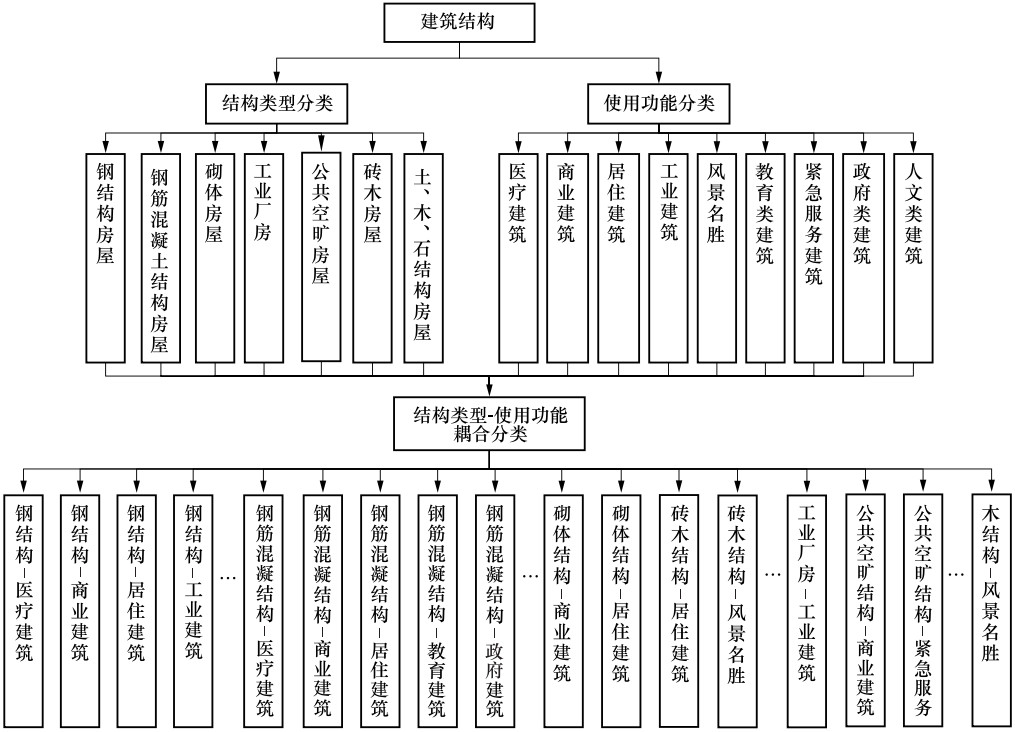
 下载:
下载:

